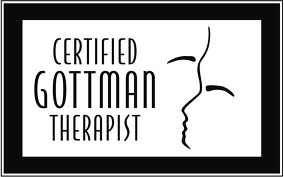How Dyslexic Students Learn to Read
Researchers have discovered that children learn to read successfully when instruction includes certain basic elements. For dyslexic students, it is essential that students receive instruction tailored to their particular needs. Instruction must be at their level (not too advanced), and it must be intensive (at least 90 minutes per day), and systematic (not loose or inconsistent). It must be offered in small groups (1 to 3 students per teacher). Instruction must focus on reading practice (not vision training or movement therapy). The particular method of instruction is probably less important than the level of experience of the teacher.
Because each dyslexic student is unique, everyone requires a different strategy. An individual education plan (IEP) should be created for each child with the condition.
The following may be recommended:
- Extra learning assistance, called remedial instruction;
- Private, individual tutoring;
- Special day class or pull-out resource class;
- Enrollment full-time in a school designed for children with learning disabilities.
Effective instruction must include the following:
- Specific focus on phonemic awareness—identifying and manipulating the individual sounds in words (like rhyming sounds, ending sounds, and breaking words into syllables);
- Phonics instruction—teaching relationships between the letters and individual sounds of language—which must be systematic and explicit;
- Provide students ample opportunity to apply what they are learning about letters and sounds to the reading of words, sentences and stories;
- Fluency instruction—to get better at reading accurately and quickly, which leads to better comprehension. For example, reading aloud the same passage repeatedly, while being monitored by a teacher or parent, improves reading fluency and overall achievement more than silent independent reading;
- Vocabulary instruction;
- Text comprehension instruction—teaching students to be aware of what they do understand, what they don’t understand, and use appropriate strategies to fix problems in comprehension.
How parents can help. In my experience, parents are especially hungry to know what they can do themselves to help their child get better at reading. They want to know what techniques help the most, what they can do to build motivation and interest, and what they can do to decrease frustration. Here are a few suggestions for reading practice at home with young children (1st -3rd grade):
- Reading practice should occur daily for 20-30 minutes.
- Sit together and have the child read aloud to you. “Shadow” your child, that is, prompt your child with help whenever the child stalls or stumbles, so you keep up a good pace. Here and there make your child work a bit to sound out hard words, but don’t make your child labor too much. Keep it moving.
- Build fluency by re-reading passages several times. Do this every day.
- Take some time to read aloud to your child while he or she follows along with the text.
- Build comprehension by pausing to ask questions, review, and anticipate what will happen next.
- Select books that are interesting and engaging.
- Watch your tone of voice—it sets the tone for the reading practice. Stay upbeat. Avoid conveying impatience, even when your child struggles or gets discouraged. If you feel like it’s becoming a battle, take a break; try again later.
- Give audiobooks a try. In my family, listening to audiobooks on long car trips became a beloved tradition and ignited in my daughters a fiery passion for books. Audiobooks strengthen attention span and comprehension. The library has free books on tape/CD, and you can buy titles through iTunes and audible.com.
It’s not easy, but dyslexic students can learn to read and go on to become successful students. Research clearly shows that systematic programs can significantly improve core reading skills in the weakest readers in first and second grade. It is more challenging to bring older children (after second grade) up to expected grade levels once they fall behind, although significant improvements in reading can still occur. Improvements are much easier to achieve for accuracy than for fluency. One clear conclusion from educational research is that intensive intervention is best started when the child is young. Waiting is costly.
- Teletherapy–One Year Later - April 26, 2021
- Passion and Sex in Long-Term Relationships - January 1, 2021
- (home video area 2 – mindfulness) - December 1, 2020



gdcbemina says
I was looking for a meds site when I came across your post in a google search. I agree you with your post completely. Couldnt of said it better myself.
Caroline says
Some very helpful tips. As a Spanish teacher, I find myself helping students challenged with basic reading and deciphering skills. Any tips for high schoolers?
Dr. Susan O'Grady says
Caroline, That is a challenge for sure. Learning a language in HS really shows the gaps in prior educational attainment. I’ll check with David who will know more about this topic and suggest he write a followup post for this age group. Thanks for your comment.